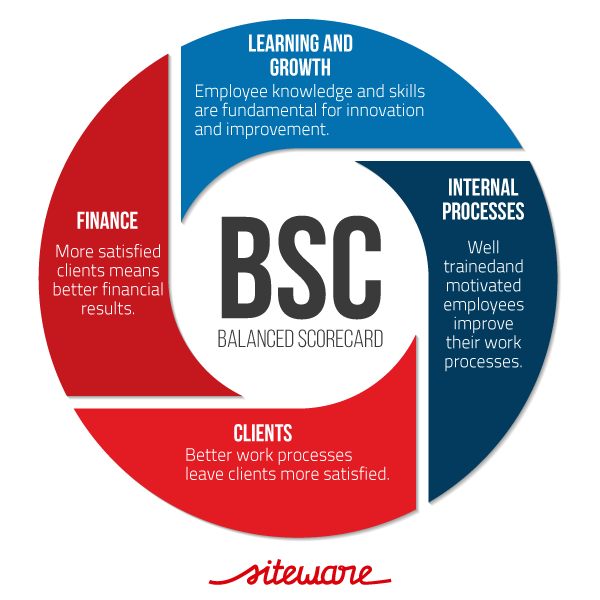The mean of BSC, or Balanced Scorecard, is a vital tool for organizations aiming to enhance their performance measurement and strategic planning. In today's fast-paced business environment, simply focusing on financial metrics is no longer sufficient. Companies need a holistic view of their performance that incorporates various dimensions, which is where the Balanced Scorecard comes into play. This article will dive deep into the mean of BSC, exploring its components, benefits, and how it can be effectively implemented in organizations.
In this guide, we will cover essential aspects of the Balanced Scorecard, including its definition, components, and various applications. By the end of this article, you will have a solid understanding of how the mean of BSC can help organizations achieve their strategic goals and improve overall performance. Moreover, we will provide practical examples and tips for leveraging this powerful framework in your organization.
Whether you are a business leader, strategist, or simply someone interested in performance management, this article aims to provide valuable insights into the Balanced Scorecard. So, let's begin our journey to unravel the complexities of the mean of BSC.
Table of Contents
- What is BSC?
- Components of BSC
- Benefits of BSC
- How to Implement BSC
- Case Studies of BSC
- Challenges of BSC
- Future of BSC
- Conclusion
What is BSC?
The Balanced Scorecard (BSC) is a strategic planning and performance management framework that organizations use to align business activities to the vision and strategy of the organization. It helps in monitoring organizational performance against strategic goals.
Developed by Robert Kaplan and David Norton in the early 1990s, the BSC provides a comprehensive view of business performance through four perspectives: financial, customer, internal processes, and learning and growth. This multi-faceted approach allows organizations to track both short-term and long-term performance.
Definition of BSC
The mean of BSC can be defined as a systematic approach that translates an organization’s strategic objectives into a set of performance metrics. This approach helps in identifying the drivers of future performance while providing a framework for evaluating the effectiveness of current strategies.
Components of BSC
The Balanced Scorecard consists of four main components, each representing a different perspective of the organization:
- Financial Perspective: This aspect focuses on financial performance metrics such as revenue growth, profitability, and return on investment.
- Customer Perspective: This component evaluates customer satisfaction and retention, providing insights into how customers perceive the organization.
- Internal Processes Perspective: This perspective examines the efficiency and effectiveness of internal processes that drive value for the organization.
- Learning and Growth Perspective: This aspect focuses on the organization’s ability to innovate and improve, emphasizing employee training and development.
How Each Component Works
Each component of the BSC is interrelated, and performance in one area can influence others. For instance, improving customer satisfaction (Customer Perspective) can lead to increased revenue (Financial Perspective). By regularly monitoring these components, organizations can ensure alignment with their strategic objectives.
Benefits of BSC
The Balanced Scorecard offers numerous benefits for organizations looking to enhance their performance management processes:
- Holistic View: BSC provides a comprehensive view of performance, integrating financial and non-financial metrics.
- Strategic Alignment: It ensures that all organizational activities are aligned with strategic goals, fostering a unified approach.
- Improved Communication: By using a common framework, BSC enhances communication among departments and teams.
- Better Decision-Making: Organizations can make more informed decisions based on a balanced set of performance metrics.
How to Implement BSC
Implementing the Balanced Scorecard requires a structured approach. Here are the key steps involved:
- Define Vision and Strategy: Start by clearly articulating the organization's vision and strategic objectives.
- Develop Performance Metrics: Identify key performance indicators (KPIs) for each of the four perspectives.
- Set Targets: Establish performance targets for each KPI to measure progress.
- Communicate and Cascade: Ensure that all employees understand the BSC and how their roles contribute to strategic goals.
- Monitor and Review: Regularly review performance against the established metrics and adjust strategies as necessary.
Case Studies of BSC
Numerous organizations have successfully implemented the Balanced Scorecard to enhance their performance. Here are a few case studies:
- Kaplan & Norton: The creators of BSC used their own framework to improve their consulting business, resulting in increased client satisfaction and profitability.
- Mobil: The company used BSC to align its global operations with strategic objectives, leading to improved efficiency and service delivery.
Challenges of BSC
While the Balanced Scorecard offers numerous advantages, organizations may face challenges during implementation:
- Complexity: The BSC can be complex to implement, requiring significant time and resources.
- Resistance to Change: Employees may resist changes associated with the new performance management system.
- Data Availability: Organizations need reliable data to measure performance accurately.
Future of BSC
The future of the Balanced Scorecard looks bright as organizations continue to recognize the value of a holistic performance measurement system. With advancements in technology and data analytics, the BSC can be integrated with modern business intelligence tools to provide real-time insights and improve decision-making.
Conclusion
In conclusion, the mean of BSC is a powerful tool for organizations aiming to improve performance and achieve strategic objectives. By providing a comprehensive view of performance across multiple dimensions, the Balanced Scorecard enables organizations to make more informed decisions and align their activities with their vision and strategy. As you consider implementing the BSC in your organization, remember to focus on clear communication, robust data collection, and ongoing evaluation of performance metrics.
We invite you to share your thoughts on the Balanced Scorecard or your experiences with performance management in the comments below. For more insights and articles on business strategy, feel free to explore our site further!
Thank you for reading, and we hope to see you back soon for more valuable content!


